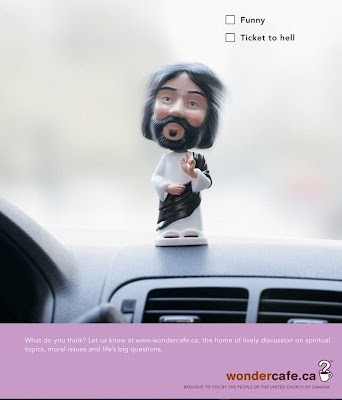
Professor Jef I. Richards once said, "Creative without strategy is called 'art.' Creative with strategy is called 'advertising." Years have passed but those insightful words still help shape our approach to marketing. However, bringing life to strategy through the illustration of words and images so it ignites the heart with a burning passion to better life is indeed an art.
Do people find meaning and purpose in your advertisement? Are you challenging their soul to join a cause that changes their world? People seek significance in life, which is the strongest “offer” charities provide. However, many nonprofits struggle to design their message in a clear and powerful way.
Therefore, in order to maximize the impact of your charity’s message, it must be presented concisely, so it will get read; clearly, so it will be understood; creatively, so it will be remembered; and consistently, so it can guide people to self-discovery.
The presentation of your core message matters more than the demographic it reaches . . . a powerful and compelling message stands on its own, without the help of fanfare artwork to entice a target audience.
Do you have a powerful and compelling message?
Here are a Baker’s Dozen to help you illustrate your core message in a print advertisement.
1. First document your marketing objective. What is the “one” action you want the reader to take? Make sure that action is measurable.
2. Most likely, there are a number of benefits to be realized if the reader takes your desired action. Before you craft your ad, write down all of the benefits. Then rank all the benefits from strongest to weakest.
3. Keep in mind the demographic and psychographic make up of the potential reader of your ad. For example, if you’re placing an ad in Better Homes and Gardens make sure you ask to see their readership profile.
4. Study the way other marketers are positioning their ads within a potential publication . . . not to copy them but rather to understand how to simultaneously, craft your message so it is both unique and familiar.
5. Men and women are different in how they approach just about everything in life. Therefore, you may want to create an ad that appeals to a woman, one that strikes their emotional cord and another that appeals to men, adventurous and world changing in nature. Of course you can take this a step further and create ads that appeal to specific generations that utilize icons and phrases from a particular period in time . . . this works very well in alumni marketing.6. After you understand the one thing you want the ad to accomplish, make sure you “sell” that benefit in a “BIG” way. Don’t clutter the ad with other calls-to-action or offers. Stay focused on one thing and remember the best ads are like a rhinoceros . . . they make a single point powerfully.
7. Spend a majority of your time thinking of what the headline will communicate. Your ad’s headline must seize the reader’s attention and compel them to probe further. Many groups do the exact opposite; they spend a majority of their time writing copy and worrying about color schemes that in the end, there is little time to craft a extraordinary headline.
8. Ensure that your visual matches your headline. The imagery you select should communicate the same benefit promised in your headline.
9. Make sure you include multiple ways for people to respond, a clip-out coupon, telephone number, and a Web site address that directs them to an identical campaign or landing Web page.
10. You will discover that some publications work and others don’t but only if you are uniquely coding each advertisement. We value what we measure therefore we must ensure everything we do is measurable. Furthermore, you want to make sure that you are measuring the long-term value of the people who respond from each publication. This will help you realize how to spend your future marketing dollars in order to receive highest return on investment (ROI).
11. Make sure your ad has a natural flow to it. What part of the ad will the reader see first, then second, third and so on.
12. Keep in mind donors give toward the impact of your organization, save and change lives and not to coordination, distribution, training, managing, shipping, etc.
13. Include a well-known endorser of your mission, someone either on a local or national level that says your organization is worthy of people’s support.
Most charities can not afford a nationwide ad campaign so if you have a limited budget, which most do, pick your publications wisely. It is better to place your ad in one or two publications each and every time, than ten to fifteen publications just one or two times. This is the frequency over reach principle . . . you can’t be everywhere so dominate where you are and your message will break through.
Here is that principle . . . Will you reach 100% of the people and persuade them 10% of the way? Or will you reach 10% of the people and persuade them 100% of the way? The cost is the same.



No comments:
Post a Comment